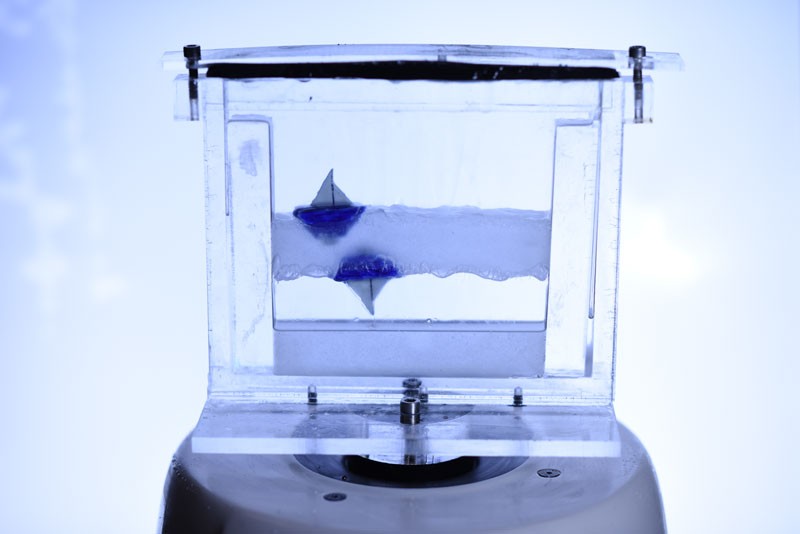
Suspended liquids and inverted floating boats may seem like something straight out of a Harry Potter novel. However, as a team of scientists at the ESPCI in Paris, France, recently demonstrated, the gravity-defying feats do not require magical spells — just the knowledge of some basic laws of physics!
“We were playing with the experiment,” says ESPCI professor Emmanuel Fort. “We had this liquid layer and some beads, and we were surprised to see the beads floating on the lower interface. At first, it was not meant to be applied to anything practical, we were just amazed by the system and how counter-intuitive it was.”
The team began by placing a plexiglass container filled with a thick, heavy liquid, like glycerol, on a machine that was set to vibrate at 100 cycles per second. The high viscosity fluid was chosen because the vibrations would cause runny liquids, like water, to ripple or "slosh" around, making it impossible to form a stable, levitated layer. The researchers then injected air bubbles into the liquid, which were pushed down by the rapid vibrations to form a dense layer below the liquid. The trapped cushion of air allowed the liquid to stay suspended, instead of dripping to the bottom.

Once the liquid was suspended, the scientists carefully inserted small objects, including beads, tiny boats, and rubber ducks, on the underside. To their surprise, instead of dropping to the bottom of the container, the objects moved to a partially submerged position underneath the suspended fluid and began floating upside down. The French team, who published their findings in Nature on September 2, 2020, say that the seemingly magical feat can be explained by science. The layer of air trapped under the dense, levitating liquid pushes the objects up into the liquid, while gravity keeps trying to pull it down. The delicate balance between these two forces allows the boat and other objects to float upside down.
The scientists next plan to attempt suspending two types of fluids in the same container and explore if the experiment works when the amount of fluid or size of floating objects is altered. Fort believes the latter is very possible. The researcher told Newscientist, “There is no size limit as long as the liquid is viscous enough, so if you wanted to swim on the bottom of a levitating liquid layer you would be swimming through something more viscous like honey, which would be entertaining to watch."
